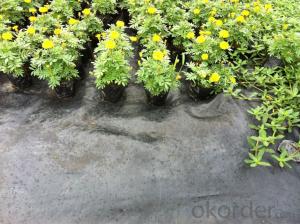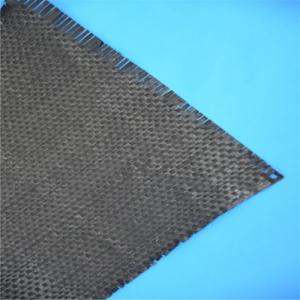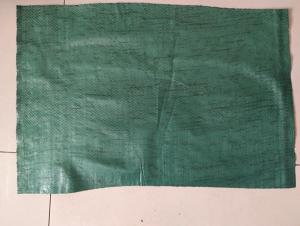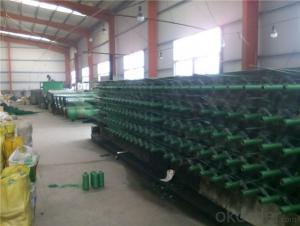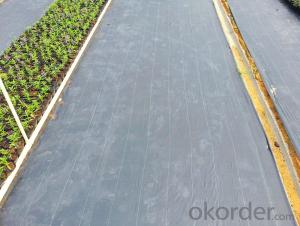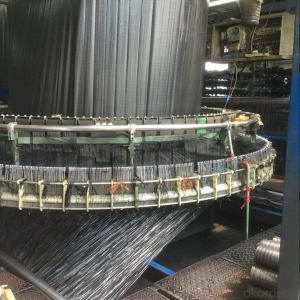PP Woven Geotextile/ Weed Barrier Fabric for Garden and Agriculture
- Loading Port:
- China main port
- Payment Terms:
- TT or LC
- Min Order Qty:
- 1000 m²
- Supply Capability:
- 10000 m²/month
OKorder Service Pledge
OKorder Financial Service
You Might Also Like
1. Weed Barrier Fabric Description:
Weed Barrier Fabric is made of environmentally friendly raw materials, pp woven fabric. It used to prevent the growth of weed,
without the use of potentially dangerous chemical sprays or labor intensive hoeing.

2. Weed Barrier Fabric Specification:
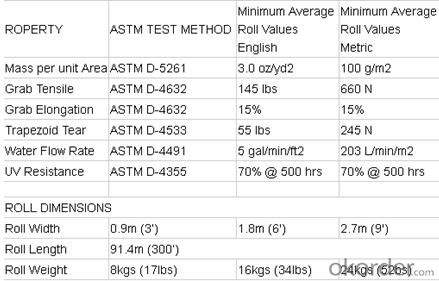
3. Weed Barrier Fabric Functions and Features:
1)Excellent weed control
2)Excellent UV resistance
3)Moisture,fertilizers,air reach plants to allow for healthy soil
4)Good water and air permeability
5)Exceptional toughness and strength
6)Durable,tear-resistant,anti-rot and anti-mildew
7)Light weight,easy to install,follows natural ground contours
8)Ideal for use in landscaped beds,under decks and walkways
9)Fashionable design,high quality,competitive price
10)Long service life
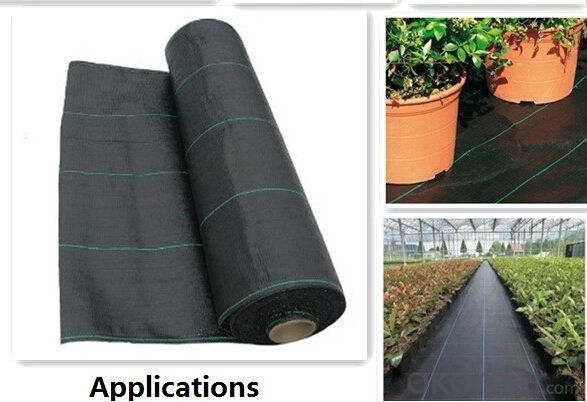
4. Weed Barrier Fabric Property:
1) Light weight, high strength, low elongation, easy to construct.
2) Reinforcement, separation, drainage and filtration, fencing function, etc.
5. Weed Barrier Fabric Application:
It can be widely used in areas of railways, highways, sport fields, earthwork, etc.
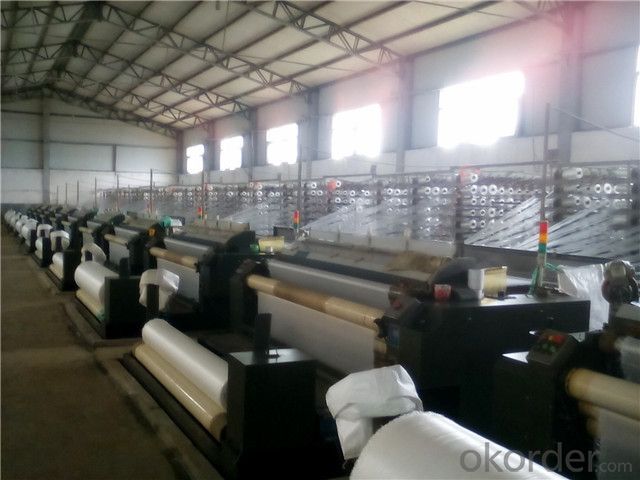
5. FAQ:
Q1:Can you send samples to us ?
A1:Yes , free samples could be provided , but customer need pay for the freight cost . After order placed , the freight charge could be refund .
Q2:What’s your Payment term ?
A2:T/T , L/C , Western Union,Paypal ...
Q3:What’s your manufacture process time ?
A3:Usually within 20 days
- Q:In ANSYS, geotextile what unit to simulate it?
- The use of shell units is relatively more reasonable.
- Q:Geotextile how to sample
- It is best in the middle of a piece of cloth cut 1 square meters on the line
- Q:How do geotextiles help with soil separation in railway ballast systems?
- Geotextiles help with soil separation in railway ballast systems by acting as a barrier between the ballast and the underlying soil. They prevent the mixing of fine particles from the soil with the ballast, which can lead to the degradation of ballast and decrease its load-bearing capacity. Geotextiles also provide filtration, allowing water to drain freely while retaining the ballast material, thereby maintaining stability and preventing the loss of ballast particles.
- Q:How are geotextiles tested for durability?
- Geotextiles are tested for durability through various methods, including exposure to environmental factors such as sunlight, moisture, and temperature changes. Additionally, they undergo mechanical tests like puncture resistance, tear strength, and tensile strength evaluations. These tests help determine the geotextile's ability to withstand long-term use and maintain its structural integrity in different applications.
- Q:What are the key factors affecting the clogging behavior of geotextiles?
- The key factors affecting the clogging behavior of geotextiles include the particle size and gradation of the soil or other material being filtered, the permeability and porosity of the geotextile, the hydraulic loading conditions, the presence of fines or clay particles in the soil, and the duration of exposure to clogging agents. Other factors such as the geotextile's physical and chemical properties, the presence of biological organisms, and the maintenance practices also play a role in determining the clogging behavior.
- Q:What are geotextiles?
- Geotextiles are synthetic fabrics that are specially designed to be used in civil engineering projects to improve soil stability, filtration, drainage, and erosion control. These permeable fabrics are commonly used in road construction, landfills, retaining walls, and other geotechnical applications to enhance the performance and longevity of the infrastructure.
- Q:What are the key considerations for geotextile installation in seismic zones?
- The key considerations for geotextile installation in seismic zones include the selection of appropriate geotextile materials, careful placement and anchoring of the geotextile to withstand seismic activity, and ensuring proper design and engineering to account for the dynamic forces generated during earthquakes. Additionally, the geotextile installation should be done in accordance with local building codes and regulations specific to seismic zones to ensure the safety and effectiveness of the geotextile system.
- Q:Supply Tianhe District staple geotextile and anti-geotextile what is the same
- Staple geotextile is made of polyester staple fiber by acupuncture, because it can play the role of anti-filtration, and thus staple geotextile can also be called anti-geotextile. Filter geotextile is based on the use of the name, so long as it is able to play the role of anti-filter geotextile called geotextile filter, geotextile, including geotextile geotextile, filament geotextile, the preparation of geotextile, Woven geotextile, non-woven geotextile, polypropylene geotextile. Tianhe District used staple geotextile and anti-filter geotextile is the same.
- Q:300 grams of non-woven geotextile piercing strength is how much
- First of all, according to what you said 300g non-woven geotextile should be polyester staple fiber non-woven geotextile. Polyester staple fiber non - woven geotextile implementation of the national standard GB / T - 2008 standard. According to GB / T-2008 standard anti-puncture strength (standard is CBR burst strength) requirements, 300g national standard geotextile anti-piercing strength should be ≥ 1.5KN.
- Q:What are the factors affecting the performance of geotextiles?
- There are several factors that can affect the performance of geotextiles. These include the type and quality of the material used, the installation and design of the geotextile system, the environmental conditions, such as temperature and moisture levels, and the duration and intensity of the load or stress applied to the geotextile. Additionally, factors such as chemical exposure, UV radiation, and biological activity can also impact the performance of geotextiles.
1. Manufacturer Overview |
|
|---|---|
| Location | |
| Year Established | |
| Annual Output Value | |
| Main Markets | |
| Company Certifications | |
2. Manufacturer Certificates |
|
|---|---|
| a) Certification Name | |
| Range | |
| Reference | |
| Validity Period | |
3. Manufacturer Capability |
|
|---|---|
| a)Trade Capacity | |
| Nearest Port | |
| Export Percentage | |
| No.of Employees in Trade Department | |
| Language Spoken: | |
| b)Factory Information | |
| Factory Size: | |
| No. of Production Lines | |
| Contract Manufacturing | |
| Product Price Range | |
Send your message to us
PP Woven Geotextile/ Weed Barrier Fabric for Garden and Agriculture
- Loading Port:
- China main port
- Payment Terms:
- TT or LC
- Min Order Qty:
- 1000 m²
- Supply Capability:
- 10000 m²/month
OKorder Service Pledge
OKorder Financial Service
Similar products
New products
Hot products
Related keywords
